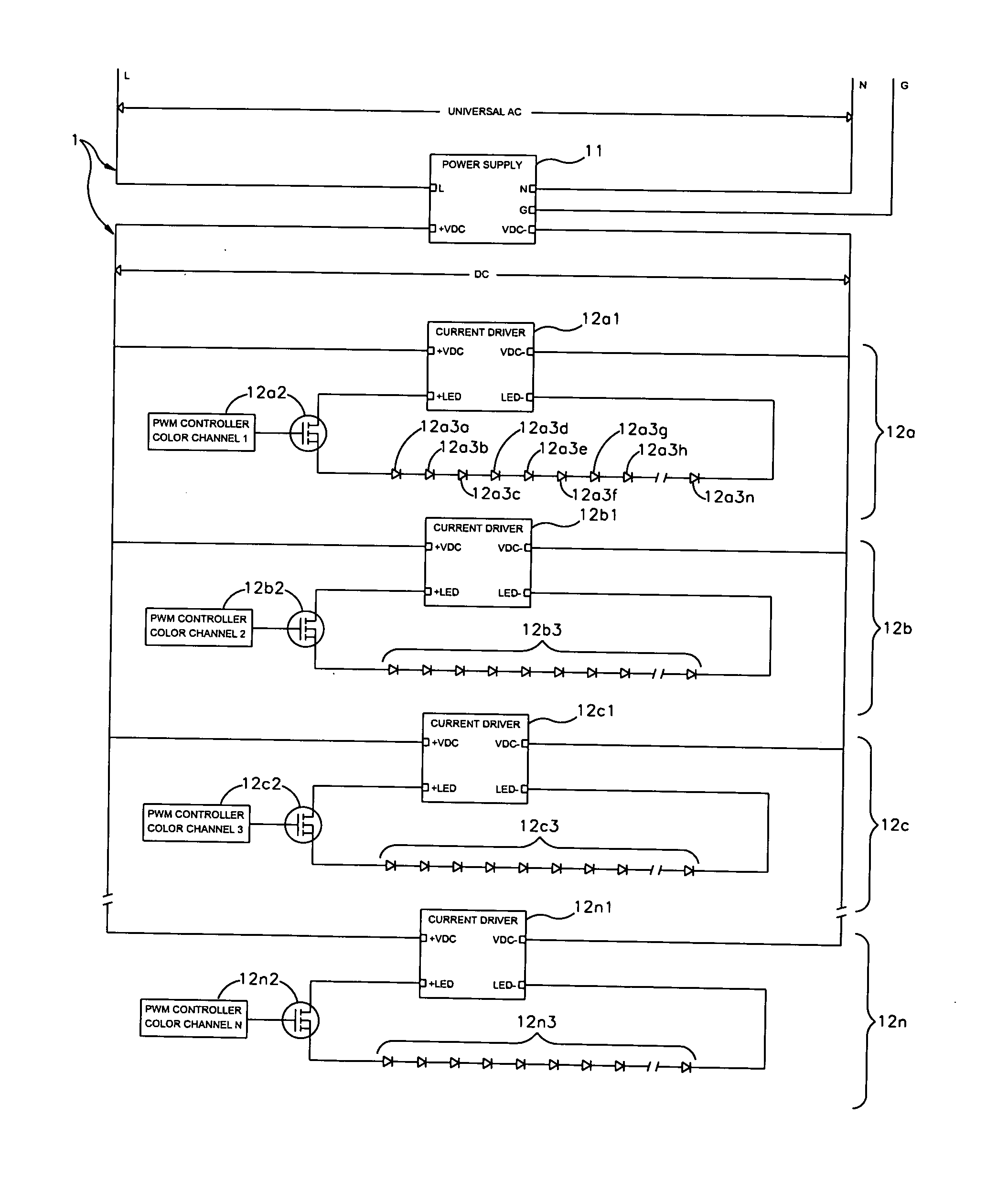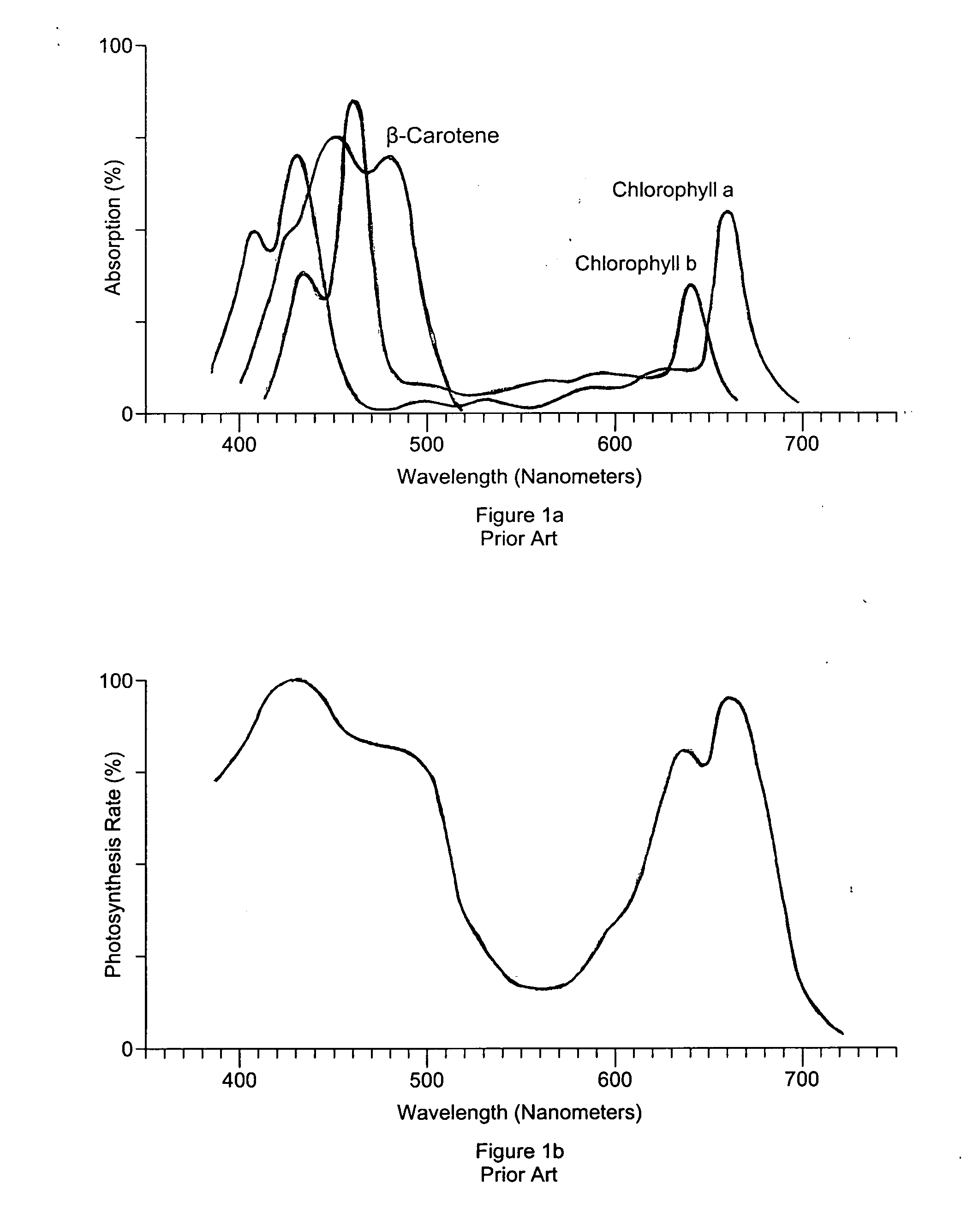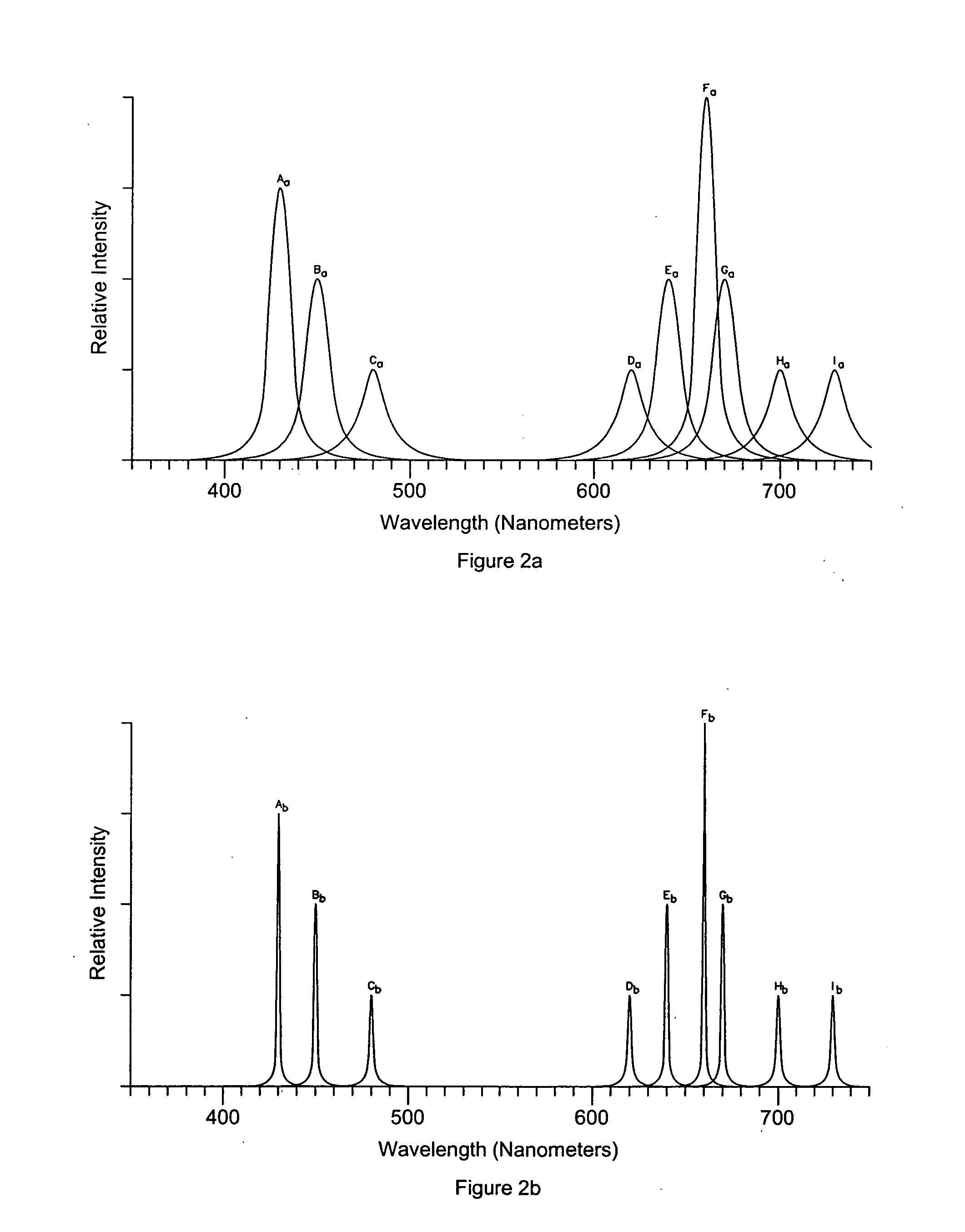Narrowband photosynthetically active radiation ('PAR") substantially only at each of multiple emission wavelengths yields good photosynthesis at reduced energy cost
- Summary
- Abstract
- Description
- Claims
- Application Information
AI Technical Summary
Benefits of technology
Problems solved by technology
Method used
Image
Examples
Embodiment Construction
[0082]The subject of the present invention is the production, and the application, of Photosynthetically Active Radiation (“PAR”) where the PAR is very efficient to produce desired normal growth and maturation of the plants. An efficient PAR means that less energy—normally in the form of electricity—can be used to produce the PAR and the resultant plant growth. This is true no matter what the means of (narrowband) electrical illumination, although LEDs are strongly preferred,
[0083]Although a related patent application will teach another, independent, method of realizing an efficient and effective PAR, the efficiency gains of the present invention are essentially realized by production and application of (1) narrowband radiation (nominally ±5 nm, although as far as is known every single photon can have exactly the same wavelength (i.e., ±0 nm), about (2) each of a multiplicity of emission wavelengths, nominally nine such wavelengths. The (3) emission strength, or intensity, at each o...
PUM
 Login to View More
Login to View More Abstract
Description
Claims
Application Information
 Login to View More
Login to View More - R&D
- Intellectual Property
- Life Sciences
- Materials
- Tech Scout
- Unparalleled Data Quality
- Higher Quality Content
- 60% Fewer Hallucinations
Browse by: Latest US Patents, China's latest patents, Technical Efficacy Thesaurus, Application Domain, Technology Topic, Popular Technical Reports.
© 2025 PatSnap. All rights reserved.Legal|Privacy policy|Modern Slavery Act Transparency Statement|Sitemap|About US| Contact US: help@patsnap.com



